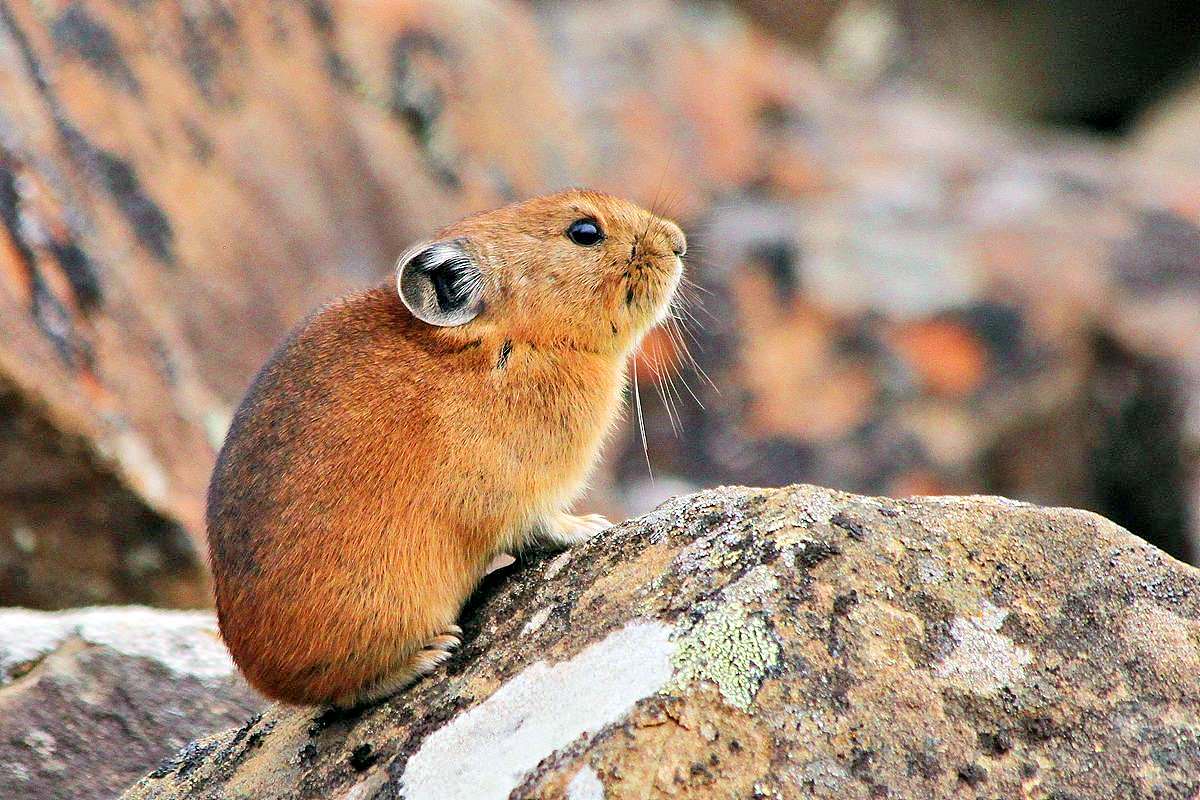The Name Game 🏆
The pika, a creature that resembles a mouse in appearance and shares its name with the famous Pokémon character Pikachu, is indeed a unique and fascinating animal. With its round, rotund body and large, mouse-like ears, it’s no wonder the pika has earned itself the moniker “the mouse-rabbit.” 🐁🐰
Despite the similarities in name, the pika and Pikachu are not related. The creator of Pokémon, Satoshi Tajiri, clarified that the name “Pikachu” was derived from the Japanese onomatopoeic word for the sound of electricity, “pika,” combined with the Japanese word for a mouse’s squeaking sound, “chu.” 💡⚡
The High-Altitude Dweller 🗻
The pika is a true master of high-altitude living, thriving in the harsh conditions of the Qinghai-Tibetan Plateau. With its origins dating back over 37 million years, the pika has witnessed and adapted to the entire uplift process of this formidable plateau. 🌄🕰️
Estimates suggest that the Qinghai-Tibetan Plateau is home to a staggering 12 billion pikas, earning it the nickname “the Pika Plateau.” These furry creatures have become an integral part of the high-altitude ecosystem, serving as a crucial link in the food chain. 🌍🌱
The Ultimate Survivalists 🥕🥬
To survive the long, harsh winters of the Qinghai-Tibetan Plateau, pikas have developed ingenious strategies. They meticulously gather and dry grasses during the summer months, storing them in “hay piles” beneath rocks for the lean winter season. 🌾💨
But that’s not all! Pikas have mastered the art of coprophagy, a behavior where they consume their own partially digested feces to maximize nutrient absorption. This “pseudo-rumination” allows them to extract every ounce of nourishment from their limited food supply. 💩🌱
In their relentless quest for sustenance, pikas display remarkable resourcefulness. Some even resort to raiding their neighbors’ hay piles, snatching a few strands here and there in hopes of supplementing their own dwindling supplies. While this behavior may seem mischievous, it highlights the pika’s unwavering determination to survive. 🚶♂️🌾👀
Neighbors and Foes 🐂🦊
While pikas may seem insignificant, they play a crucial role in the high-altitude ecosystem. Their abundance supports a wide range of predators, from the elusive snow leopard to the iconic Tibetan fox, which relies almost exclusively on pikas for sustenance. 🐆🦊
The Tibetan fox, in particular, has developed a fascinating relationship with these small mammals. Pikas are not only their primary prey but also play a significant role in shaping the behavior and habitat preferences of these foxes. Areas with abundant pika populations often attract more Tibetan foxes, leading to a delicate balance between predator and prey. 🦊🐰🌄
However, pikas have also found an unlikely ally in the yaks that roam the plateau. The nutrient-rich yak dung serves as a valuable food source for these resourceful creatures during the lean winter months. 🐃💩
Conservation Concerns 🌍🛡️
Despite their resilience, pikas have faced challenges due to overgrazing and habitat degradation. In the past, misguided efforts to control pika populations through poisoning failed to address the root cause of grassland degradation, leading to a shift in conservation strategies. 🌾⚠️
Today, experts recognize the vital role pikas play in maintaining the delicate balance of the high-altitude ecosystem. As a keystone species, their presence or absence can significantly impact the entire food web, affecting the populations of predators like the Tibetan fox and snow leopard. 🦊🐆🌳
Furthermore, pikas are considered an indicator species, providing valuable insights into the health of the Qinghai-Tibetan Plateau’s fragile environment. Their population dynamics and behavioral patterns can serve as early warning signs of environmental changes, allowing conservationists to take proactive measures to protect this unique ecosystem. 🌍🔍
The Pika’s Vocal Virtuosity 🎤🎶
One of the most captivating aspects of pikas is their remarkable vocal repertoire. These small creatures are often referred to as “barking rabbits” or “singing mice” due to their distinctive calls that echo across the rocky slopes and meadows they inhabit. 🗣️🎼
Pikas use a variety of vocalizations to communicate with their neighbors, warn of potential threats, and even attract mates during breeding season. From high-pitched squeaks to melodic trills, their calls are not only charming but also serve crucial social and survival functions. 🔊🎵
Researchers have discovered that pika calls can convey complex information, such as individual identity, territorial boundaries, and even the presence of predators in the vicinity. These intricate vocalizations highlight the pika’s sophisticated social structure and their ability to adapt to the challenges of their harsh environments. 🗺️🔍
A Delicate Balance 🌱⚖️
The pika’s role in the Qinghai-Tibetan Plateau ecosystem extends far beyond its interactions with predators and food sources. These industrious creatures are also essential for maintaining the health and vitality of the plateau’s grasslands. 🌾🌳
Through their constant foraging and burrowing activities, pikas aerate and fertilize the soil, promoting the growth of diverse plant species. Their hay piles, scattered across the landscape, serve as miniature oases, providing shelter and food for a variety of other small mammals and insects. 🐜🐞
However, this delicate balance can be disrupted by human activities such as overgrazing and climate change. As temperatures rise and precipitation patterns shift, the fragile alpine meadows that pikas call home may become increasingly inhospitable. 🌡️☀️
Conservationists and researchers are working tirelessly to understand the complex interplay between pikas, their environment, and the impacts of human activities. By studying these unassuming creatures, we can gain valuable insights into the health of the entire Qinghai-Tibetan Plateau ecosystem and develop strategies to protect its biodiversity for generations to come. 🌍🔬
Copyright © 2024 Hea1th.net

